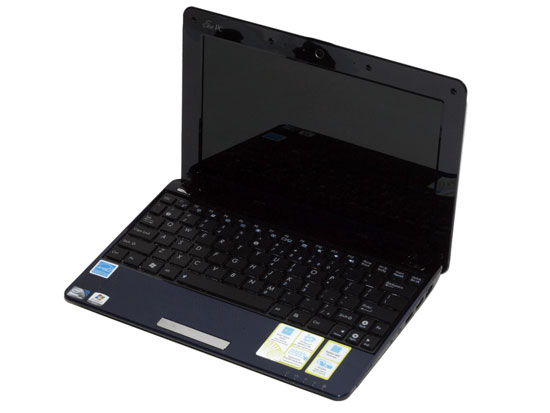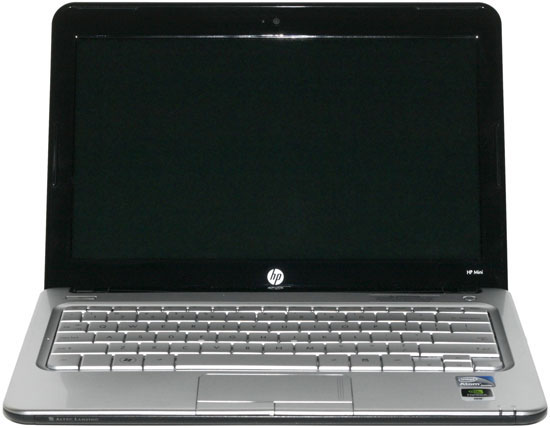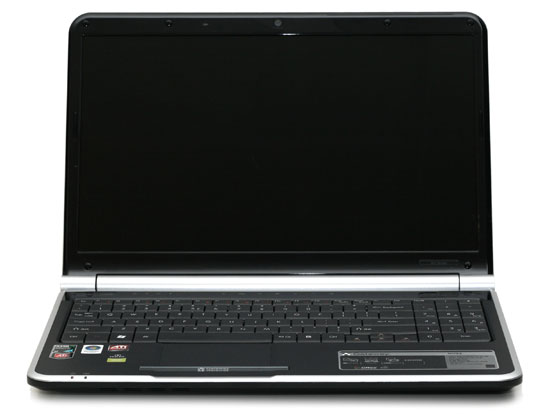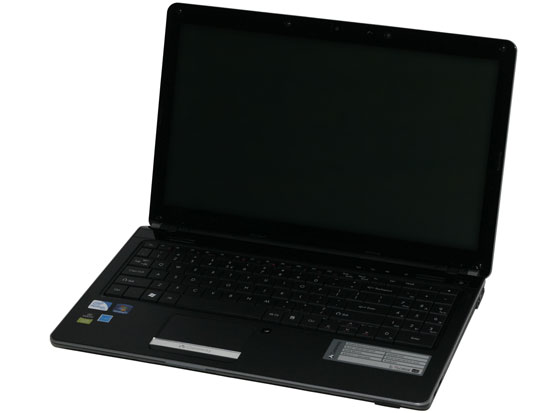Intel Core 2 CULV Roundup: Who Needs Atom?
by Jarred Walton on February 4, 2010 4:00 AM ESTMarket Recap (aka Conclusion Part 1)
We asked at the outset, "Who needs Atom?" It's now time to answer that based on our review today. What we really need to look at are the strengths and weaknesses of the various platforms at the various price categories. We've been over this ground before, but it bears repeating. We'll focus specifically on the entry level laptops and netbooks, with a price ceiling of around $800. Given those parameters, here's how things work out.

Sub-$350 is clearly the domain of the Atom-based netbooks, so it's definitely not dead. You'll sacrifice a lot in terms of performance, and features are also going to get cut. HD video decoding support generally isn't present, but we may see some netbooks start to ship with Broadcom Crystal HD to handle that. Intel also has their GMA 500 IGP that handles H.264 decoding quite well, but there were a lot of other issues with the drivers that made it a less than perfect solution. At present, look for Atom N450 netbooks for around $300 (give or take), and you can expect great battery life and very small form factors. So yes, Atom does have its uses.
$350-$500 is where things start to get messy. Atom netbooks obviously fall into this price range as well, but Microsoft won't let manufacturers ship Windows XP with more than 1GB RAM or a 160GB HDD. That's fine, but now you can get Windows 7 Starter (or even Home Premium in some cases) netbooks with 2GB RAM and larger HDDs. Battery life for such netbooks remains stellar, but the video decoding support is still lacking, barring a separate video decoder chip.

Another option that we encounter in this price range is NVIDIA's ION platform. ION works with the older Atom N270/N280, and battery life isn't as good as the Intel solution. The benefit is that you get full HD video decoding support - including the ability to play Blu-ray movies, assuming you have an external Blu-ray drive. Gaming is theoretically possible, but many games require more CPU power than Atom can deliver. Depending on the netbook features, ION looks to cut battery life by around 25% relative to non-ION N280 netbooks. So you can get better video support and around four hours of HD video playback and six hours of Internet surfing, or you can stick with vanilla Atom and get six hours of 720p (or lower) video playback, no Flash HD support, and up to ten hours of Internet surfing.
Need some more options? There are plenty of choices! CULV makes an entrance at just over $400, with battery life that's a bit better than ION netbooks. You also get 2GB RAM compared to most netbooks that ship with 1GB, and the GS45 chipset is much better than 945GSE so HD video content isn't a problem for the most part. (We're still waiting on full Flash 10.1 video support from Intel's IGPs, though.) Video playback can run for about 4.5 to 5 hours, and Internet battery life can reach seven hours.

If you prefer more performance and don't care as much about battery life, AMD laptops also make an appearance in this price bracket. You can find HP/Compaq and Acer/Gateway laptops with Athlon II M300/M320, 3GB/4GB RAM, and HD 4200 graphics for just under $500. These will typically be 15.6" notebooks rather than smaller form factors, and the size combined with the component choices will deliver battery life of around 2 hours for video, 2.5 hours Internet, or up to 3.5 hours in lighter loads. If you want to drop back to the older Athlon X2 CPUs and HD 3200 graphics, you can even get such laptops for around $400 (i.e. the Gateway NV52 line). We'd recommend against any of the single-core CPU solutions (AMD or Intel), as the lowered performance isn't backed by significantly improved battery life - CULV will do better in our opinion. Still, if you're okay with the compromise, you can find AMD Neo laptops as small as 11.6" with the MV-40 CPU. (Look at the MSI X610 results to see what sort of performance you'll get.)
Need even more choices? Well, they're there. Standard Intel-based (i.e. non-CULV) laptops are also available for just under $500 now, with CPUs like the Pentium T4300. The Gateway NV58 is representative of this class of laptop. Battery life is going to be around 2.5 hours for video, three hours for Internet, and up to 4.5 hours in light workloads. Basically, you'll get about 25% more battery life and 25% more CPU performance than the competing AMD solutions, but gaming isn't at all practical. (It's at least borderline on many games with the HD 3200/4200, with plenty of slightly older titles that run fine.)

At $500-$650 CULV really starts to show up a lot. Now instead of 2GB RAM, you get 4GB and generally larger hard drives. The Pentium SU4100 solutions are typically the best bang for the buck, with Core 2 Duo SU7300 usually adding $75 and only a small (5% or less) performance increase. SU7300 does add VT-x support, though, if you feel that's important. For battery life without compromising too much on performance, we feel CULV is an excellent choice. Laptops like the models we reviewed today would work great for college students, allowing you the freedom to work on papers and take notes all day at campus without the need to use an AC adapter. You can do the same with Atom, but these are faster and generally more capable. You still have to give up gaming performance, though - you'll need a discrete GPU with CULV if that's what you're after.
If you don't care about battery life and you want gaming performance, you can also turn to regular AMD and Intel laptops with GPUs like the Mobility Radeon HD 4330 or GeForce G210M (or 8200M/9300M). Another option is the new Core i3 laptops, with prices starting at around $600 for the i3-330M complete with 4GB DDR3, 320GB HDD, and the improved Intel HD Graphics. And from here the options begin to open up rapidly. As we've discussed already, the only thing you really need for CULV to handle games is a more capable GPU, and the ASUS UL line provides that as well as switchable graphics, giving you the best of both worlds. The smaller models cost a bit more, but the UL50Vt is currently selling for as little as $700. Don't like NVIDIA's GeForce line but still want CULV? Try the Lenovo U450P 33892GU for $800 (but we'd stick with the ASUS UL50Vt or UL80Vt).










62 Comments
View All Comments
JarredWalton - Friday, February 5, 2010 - link
There's not a ton of flex - nowhere near as bad as some older MSI laptops, for example - but it does have a bit of spring and it's a "soft touch" keyboard, which just feels mushy to me. I prefer a bit more click, and the spacing and shape of the keys on the 1810 wasn't as nice as the 11z. But, that's a lot of personal preference so if you like the 1810 keyboard there's nothing else I'd complain about with the design.OCedHrt - Thursday, February 4, 2010 - link
Maybe it is just me, but the graphs would be a lot clear if the processors were listed out.I assume the power draw graphs at the end of the battery page is based on the run time and battery capacity?
JarredWalton - Thursday, February 4, 2010 - link
Power graphs are based on power draw from the outlet, at 100nits LCD brightness, with all power saving features enabled (balanced power profile).Adding the CPU to each line compresses the graphs in a way I don't like. Just to quickly list the various CPUs:
Acer AO751h = Atom Z520
Acer AS1810T = Core 2 Duo SU7300
ASUS 1201N = Atom 330
ASUS 1005HA = Atom N280
ASUS UL80Vt = SU7300 (dark gold = OCed to 1.73GHz)
Dell Inspiron 11z = Pentium SU4100
Dell Studio 14z = P8600
Gateway EC5409u = Pentium SU4100
Gateway NV58 = Pentium T4300
Gateway NV52 = Athlon X2 QL-64
Gigabyte M1022 = Atom N280
HP Mini 311 = ION with Atom N280
MSI X610 = Athlon MV-40
Ralos - Friday, February 5, 2010 - link
The title of the article suggest this is a CULV vs Atom showdown. When I look at the graphics, I don't see this, I see a bunch of Acer vs Asus vs HP vs Dell and from what I gather, performance seems to be similar whatever brand the same CPU is sold with, so it really should show the name/speed of the CPUs in there.JarredWalton - Friday, February 5, 2010 - link
Per request, I've updated the chart colors to highlight other important systems. Atom 330 (ASUS 1201N) is orange, MSI X610 (Athlon MV-40 with HD 4330) is red, ASUS 1005PE (Atom N450 Pine Trail) is dark green, and ASUS 1005HA (Atom N280 Diamondville) is black. Hopefully that will help read the charts.OCedHrt - Thursday, February 4, 2010 - link
Well, thanks for trying anyways :)I guess my question is where a Z550 would stack up. Its safe to say it's 50% faster than the Z520, but I don't see that laptop in the performance line up.
I'd wager that it's marginally faster than the ASUS 1005HA with less power draw (but how much less?).
Basically, I'm trying to figure out what is the possibility of a CULV Sony X laptop in the near future ;) It may be unlikely simply due to die size..
JarredWalton - Thursday, February 4, 2010 - link
I think Z550 gets paired up with the GMA 500 chipset, which is good for HD video decode but I'm not sure that it's actually worth using. I know Linux users don't like it because it's a new proprietary GPU with no driver support.My experience (which is limited to the Acer 751h) was that it frequently crashed; what I don't know is if that was the chipset, or just a poor sample laptop from Acer. I also know that I've heard from a few readers saying they have one that crashes all the time as well. Hopefully it's the 751h and not the chipset.
As far as power draw, it should be about the same as the other Atom laptops - probably more than the 751h and 1005HA, given the 2.0GHz clock. Even then, look at the two N280 units (ASUS 1005HA and Gigabyte M1022) and you can see that not all netbooks are created equal. The Gigabyte seems to be a poor example of a netbook, though, with much worse battery life than the competition.
At 2.0GHz Atom Z550 will still be much slower than any CULV, so I'd recommend sticking with CULV unless the pricing is very compelling.
OCedHrt - Thursday, February 4, 2010 - link
The Z550 actually has a slightly lower (0.1) TDP than the N280. It's not the pricing that's compelling, but the form factor: 1.6 lb 11.1" 10.95"(W) x 0.55"(H) x 7.29"(D)KaarlisK - Friday, February 5, 2010 - link
Power consumption should be lower - the TDP of the entire Poulsbo chipset is only 2.3W. However... the damn GMA 500 is HORRIBLY slow. Even for Aero. And Intel still hasn't (and probably won't) released WDDM1.1/DX10 drivers, even though the hardware supports it. Also, the driver doesn't support 8bpp color at all.OCedHrt - Friday, February 5, 2010 - link
Best bet is probably to not run windows on this one ^^I really wish there was a CULV option, even a core solo would be much better.
I saw in some forum that they got OS X running on it. *shudder*